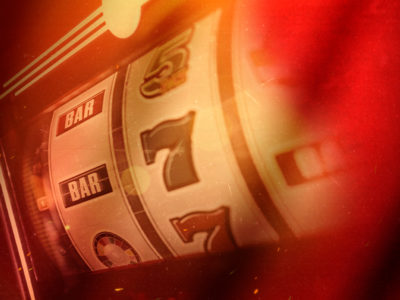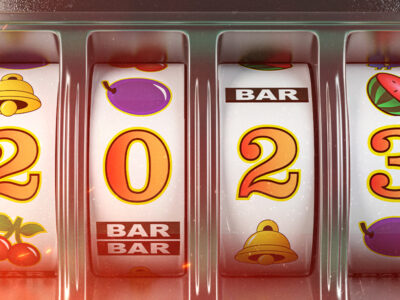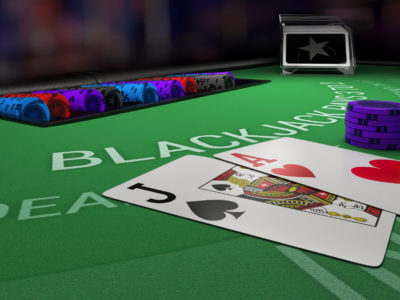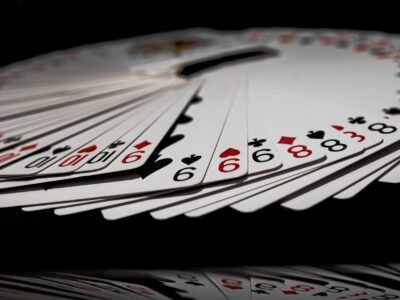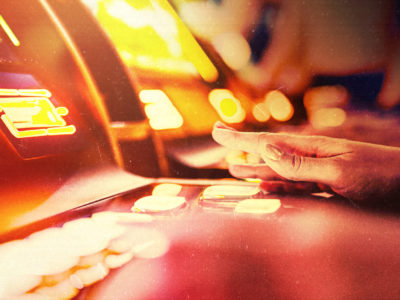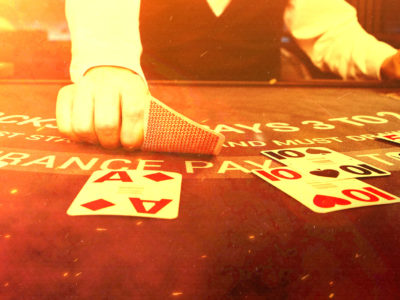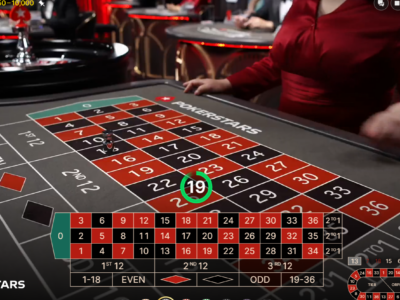“Markup” has produced one of the most heated debates in the poker world these past few weeks, and it’s particularly relevant leading up to the 2019 World Series of Poker (WSOP), for which many professional players will be selling large tournament packages.
If you’re looking to buy a sweat this summer, how can you make sure you’re making a good investment and not being conned? With the help of Maria Konnikova, author of the New York Times bestseller The Confidence Game: Why We Fall For It…Every Time, we tried to find out.
By his own admission, Johnnie Moreno — better known as Johnnie Vibes — is not a tournament poker player.
Moreno is a long-time Las Vegas cash-game grinder who began posting poker vlogs on his YouTube channel about a year ago. Those vlogs have built him a loyal following, consisting of all sorts of people—poker players and otherwise—who like to live vicariously through his card-room endeavours.
Moreno calls poker his main profession and considers the vlogging element of his career to be just for fun. By April 2019 he’d managed to build a supportive online community of vlog watchers, and decided that this year, for the 2019 WSOP, he would post a $40K tournament package and sell 30 percent of his action across the series. He posted the package in a private Facebook group…at 1.38 markup.
That’s where all the controversy started.
GOOD VIBES / BAD VIBES
Markup, for those unfamiliar with the poker staking game, is the term given to the additional fee added to “pieces” of a tournament player’s action, based on their perceived return on investment (ROI). Without markup, you might buy 10 percent of a $1,000 buy-in for $100, meaning that you pay the player $100 and then receive 10 percent of any profit they make in the tournament. But a great poker player, with a proven record in cashing $1K tournaments, might decide that they’re a favourite in the field, and will then charge a little more for packages — a markup. If the markup is 1.1, a 10 percent piece costs $110. At 1.2, the backers get 10 percent for $120, and so on. The markup is essentially guaranteed profit for the player. You might call it their fee for playing in the event on someone else’s behalf.
However, little did Moreno realise the markup minefield he was now entering.
Moreno thought his 1.38 markup was fair, and if it wasn’t he figured it wouldn’t sell.
“I was bringing my markup to a place that I thought was a reasonable value of what my time is worth to take me away from cash games,” he told Joey Ingram on the Poker Life Podcast. “It was my first time playing poker tournaments, and I posted it in a private Facebook group at 1.38 markup, thinking the market will let me know if it’s too high.”

Joey Ingram (left) and Johnnie “Vibes” Moreno on Ingram’s Poker Life Podcast
The package sold out in just a couple of hours, and on the face of it, everyone was happy. Here was an experienced cash-game pro taking a shot at this year’s WSOP, and if any of his fans wanted to buy a piece, they could get $400 worth for $552. It seemed to be a price they were happy to pay.
Later in the day, however, Moreno went on Twitter to find he was now being labelled a scammer. Many experienced tournament pros felt that the 1.38 markup he had posted for himself was wildly overpriced. Shaun Deeb, the self-professed “markup police” said: “When selling a package that after almost 1.4 markup equals lifetime cashes you’re scamming people.” Isaac Haxton said: “I want to be clear, I don’t know anything about Johnnie so this is in no way about him personally or his skill. I just think there are very few people who can beat 1.38.”
Moreno was shocked.
“This whole situation definitely caught me by surprise,” Moreno told PokerStars Blog this week. “Never in a million years did I think anyone would have a problem with my price. A price I settled on after browsing packages online and reflecting on my value. After I listed the package on Facebook it sold out in an instant. People were so excited to have a sweat and I was excited to go to work.”
A chastened Moreno admitted he learned a lot from the experience.
“I had some great logical interactions with people on Twitter,” he told Ingram. “Ike Haxton chimed in, Scott Seiver, Bill Perkins, Daniel Negreanu, Mike Matusow. Some people pointed out some things, and I learned a few things. I learned that this number [meaning his 1.38 markup] is in reference to my return on investment (ROI). I didn’t know that. I thought it was a free-market where people decided how much they wanted to pay for people.”
Despite what was said about him, it seems pretty clear that Moreno did not mean to scam or con anyone. PokerStars Caribbean Adventure 2017 Main Event winner Christian Harder agreed, tweeting: “I think Johnnie Vibes getting dragged on Twitter for his package was a little much for me. It doesn’t cross the line to ‘scamming’ to me.”

Shaun Deeb now goes by the Twitter handle “Markup Police”
With less than a week to go before the WSOP kicks off, we asked Moreno how he feels now that dust had settled.
“Once the ‘Markup Police’ decided to publicly attack my price, my character, and my poker prowess, everything blew up,” Moreno said. “But now that the dust has settled, despite becoming a scapegoat, I’m actually grateful for the whole experience.”
He continued: “Aside from the misinformation, and personal attacks, it seems that a healthy discussion around the standard practice of selling at markup needed to take place. Personally, I learned a lot about how I handle adversity, and how to better handle it in the future. I also learned a thing or two about markup. For instance, if I ever sell in the future, rather than set a price for a WSOP package for my 11 events, I would break down the price for each event. This allows for the most transparent breakdown of cost. This also would have prevented the speculation and misinformation surrounding the details of my package.
“Lastly, I’m grateful for the support of my investors. Their messages of encouragement throughout the mob-like onslaught meant the world to me. I understand how irrational the mob mentality can be, so not losing a single investor was humbling.”
Backing and staking for poker tournaments has never been more common than it is now, leading up to the WSOP and its six-week non-stop tournament schedule. Even mainstream media outlets like CNBC have picked up on the story.
But this summer, when you’re looking to purchase action of poker players for the WSOP, you might come across some players with less than good intentions. Who better, then, to talk about the psychology of potential poker con artists than psychology PhD and author, Maria Konnikova?
CALCULATING MARKUP
To explain how poker players come up with their markup numbers, we’ll turn to a recent video Daniel Negreanu made about his WSOP packages.
Later in this video, Negreanu explains that he is giving his fans a chance to buy a piece of his action at this year’s WSOP. He is dividing his tournament schedule into three tiers: the low buy-in events ($1,500 and under), the middle buy-in events ($1,501 – $10,000), and the high buy-in events ($10,000+).
“My value in the low buy-in events is much, much higher,” Negreanu says, citing his experience and skill level versus the average competency of the field. “So my markup there is probably in the neighbourhood of 2.5 to 3x the buy-in. The mid-stakes buy-ins are a little tougher with smaller fields, so for that one, I’d say my markup is probably in the neighbourhood of 1.25 to 1.3. For the high buy-in events, I’m probably about 1.15.”
Essentially, Negreanu is pricing himself at what he believes his ROI will be versus the fields at these different buy-in levels. However, the big reveal in the video is that he won’t actually be charging any markup at all.
Of course, not all players have the bankrolls of Negreanu, and selling at markup is essential for many professional poker players, for a variety of reasons.
One is that selling a percentage of themselves reduces their variance and personal risk. Two is that, if they are a well-respected player with experience and results behind them, they can justify selling at markup. And three is that this markup provides money in the player’s pocket for expenses (food and drink etc) while they’re playing.
An issue arises when players either don’t understand why they’re charging what they’re charging as they haven’t done the research, or they know they’re not worth the price and are selling too high intentionally. In those cases, the seller becomes a con artist.
“If people are wondering if a person is a con artist or not–and I get asked that question a lot from a lot of different people–I always say it’s a question of intent,” says Konnikova, who spent plenty of time examining the behaviour of con artists for her New York Times bestseller The Confidence Game: Why We Fall For It…Every Time.
Konnikova did not pass comment on any of the specific cases in the latest markup debate, but said she generally defines a con artist as someone who knowingly takes advantage of other people’s confidence for their own personal gain.
“You can’t get inside someone’s head and know what their intention was, and I think that that’s what translates to all of these markup controversies,” she says. “Does the person know that they’re not actually worth that much, and they’re just trying to get it? In which case I’m very much opposed to it. I just don’t think it’s ethical. Or is the person just deluded? In which case it’s a bad investment for you because you don’t want to invest in a deluded poker player.”

Maria Konnikova at the 2019 EPT Monte Carlo
While there have been whispers surrounding certain poker players overselling themselves in tournaments (even going so far as to sell more than 100 percent of themselves, prompting them to bust the tournament intentionally so that they can keep the markup as profit), the truth behind a player’s motives are known only by him or her.
“There are two sides to this argument,” said Doug Polk, in another Poker Life Podcast. “The free market side, which I can respect, and the unethical side, which I lean more towards. Here’s the thing: If you want to sell action, you are legally allowed to sell at whatever markup you want.”
Even one of the biggest names in poker, Phil Hellmuth, came under fire last year for selling at 1.8 markup for a $10,000 Super Turbo Bounty No Limit Hold’em tournament. Hellmuth sold out his 30 percent package with ease, but fellow pros like Matt Berkey (“bordering on thievery”) and Seiver (“he is literally defrauding people out of their money”) were outspoken against it.

Doug Polk
Hellmuth has a world-leading 14 WSOP bracelets, though, and claims to have “the best ROI in history”. Is he not entitled to sell at such a markup? Polk, not referring to Hellmuth specifically, gave his opinion to Ingram.
“I could tell people I want to sell for a tournament at 10x markup, and if I can get buyers, that’s completely legal. Nothing wrong has happened here,” he said. “But there’s a difference between legal and ethical. My approach has always been to not exploit people for gain.
“If I’m selling something I want it to be something valuable to [people], something which could help them and make them money. I don’t scam. If you’re OK doing that that’s fine, as long as you’re all right with the ethics of that. But I think it’s unethical. It’s important for us to have this discussion as a community because it helps protect people from making uninformed decisions that they think are making them money.”
PROTECTING YOURSELF
Whether you’re a poker player looking to sell at markup, or a potential investor looking to buy a piece of someone, it’s important to do your research. This will protect you from public scrutiny in the former, and protect you from losing money in the latter.
“If I were to post a package for the WSOP online at 2.0 markup, and I truly believed I had 2.0 markup (which I obviously don’t, but let’s just imagine that in some world I did), then I’d probably get called out by players who are much better than me saying: ‘Hey Maria, this is insane,’” Konnikova said. “If I’m the type of person that I would want to invest in, I would say: ‘Oh, oops! I didn’t realise. What am I meant to mark it as? 1.1? Ok, sorry, I didn’t know. I thought I was 2.0’.
“I would change it, and if I didn’t I would expect people to see me as someone who was truly deluded, in which case they shouldn’t invest in me. That’s a horrible quality in a poker player. You want somebody who is capable of taking external feedback. If they don’t, they’re scamming, they know it, and they don’t care.”
When we spoke to Konnikova at EPT Monte Carlo, she told us she was yet to charge any markup, and had never sold on an open market. “It’s a way of hedging, and it’s for the full range of my action,” she says. “I think I’m +EV in some fields and not +EV in others. It balances out. People have told me I should, and maybe I will one day, but right now I don’t feel comfortable. I totally understand why people want to charge markup. But I do feel it’s really important to go through a rigorous process to find out what you’re actually worth and to ask for external feedback.”
Hey guys! For this year's WSOP, I'm trying something new: selling some of my action to fans on @StakeKings. If you want a little piece, check it out! The package includes everything I'm playing–Ladies, all of it! More individual events to come, too 🙂 https://t.co/NM3qXKPQx6
— Maria Konnikova (@mkonnikova) May 15, 2019
On May 15, Konnikova announced on Twitter that she would be selling a WSOP package at 1.36 markup. She told us: “At one point I was actually considering it, and I asked a few people what they thought my markup would be in certain events, and they gave me some numbers. So, basically when you see me selling, just know I’ve gone through a very rigorous validation process!”
Her package, like Moreno’s, sold out in just a couple of days.
TIME FOR THE WSOP
For Moreno, the lead up to the WSOP is a chance to study tournaments like he never has before, even reaching out to leading training sites for help. He’s going at this hard. He’s certainly not in for the “markup” money.
“It’s all about the value I see for myself,” he told Ingram. “I’m not going to go negative value and play tournaments. I’m not in it for the glory. I have to put food on the table. This is my life. I’m not making money from YouTube. I’m not an affiliate. I’m not [sponsored] by online poker sites. My way of making money is by playing poker, and if I’m going to make money in tournaments it has to be in high-value situations. The high-value situations that I see are at the WSOP, where I don’t have to pay for travel or lodging.”
Ingram, who openly admits he “doesn’t know about markup”, pointed out that when you win a tournament and momentum is on your side, that seems like as good a reason as any to bump up your markup. But then comes the hard part: proving you’re worth it.
“It’s a big deal to take other people’s money,” Konnikova says. “I’d want to be really careful and I’d want to really respect it. I don’t want to screw anyone. I feel a responsibility to people who believe in me to try to prove their faith in me, and the best way to do that is to play my best.”
Good luck to everyone this summer, both players and backers alike. We’ll leave the last word to Konnikova.
“You need to do your research. And for those selling, be an ethical human being. Be a good person. Don’t take advantage of people.”
Back to TopView Other Blogs







